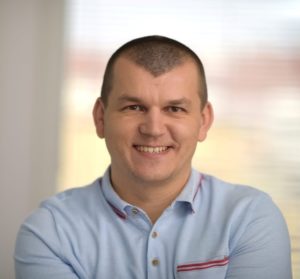

Marcel has spent his whole career in software testing. Initially, he worked as a Test Analyst before moving into Test Management in complex transformation projects and core banking implementations, focusing primarily on integration and performance testing. He is also co-founder of the testing community called [pro]Test!. In 2013 he founded the company Tesena where is works as a Principal SW Testing Consultant and together with more than 120 colleagues from Prague, Vienna, Bratislava, and Brno is helping customers across Europe to win in their business by improving software quality of their products. Recently we found wopee.io; a new startup to make autonomous testing work. His special interest is modern testing approaches (including all the trendy topics like test automation, DevOps, testing in SCRUM, AI, ML, and autonomous testing).
Marcel, Rado, and the team have implemented an autonomous visual testing framework with the aim of improving testing efficiency and software quality over the past year. While experiencing significant benefits such as increased speed and coverage, they also faced challenges and limitations. In their talk „Breaking the Illusion: How we replaced 😳 testers with Autonomous Testing“, Marcel and Rado will share their experience with autonomous testing, including both the positive and negative aspects. They will discuss the benefits it brought to their testing process and software quality, as well as the challenges they faced during the introduction, implementation, and migration from Selenium to Playwright. They will also touch on the lessons we learned, such as the importance of careful preparation, realistic planning, effective communication, and adapting to team changes. Furthermore, they will provide data and metrics that demonstrate the impact of autonomous testing on the testing process and software quality, including results from daily runs. They aim to offer a balanced view of autonomous testing, highlighting its potential benefits while acknowledging its limitations and challenges. They will cover the process of introducing autonomous testing, the challenges we faced, and the steps we took to overcome them, and also share insights and best practices for organizations considering adopting this approach. Let’s hope that their experience will help others make informed decisions about incorporating autonomous testing into their testing processes.